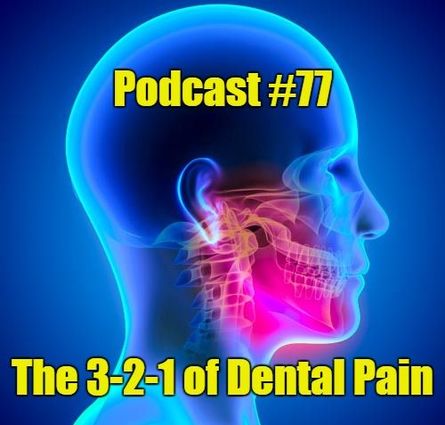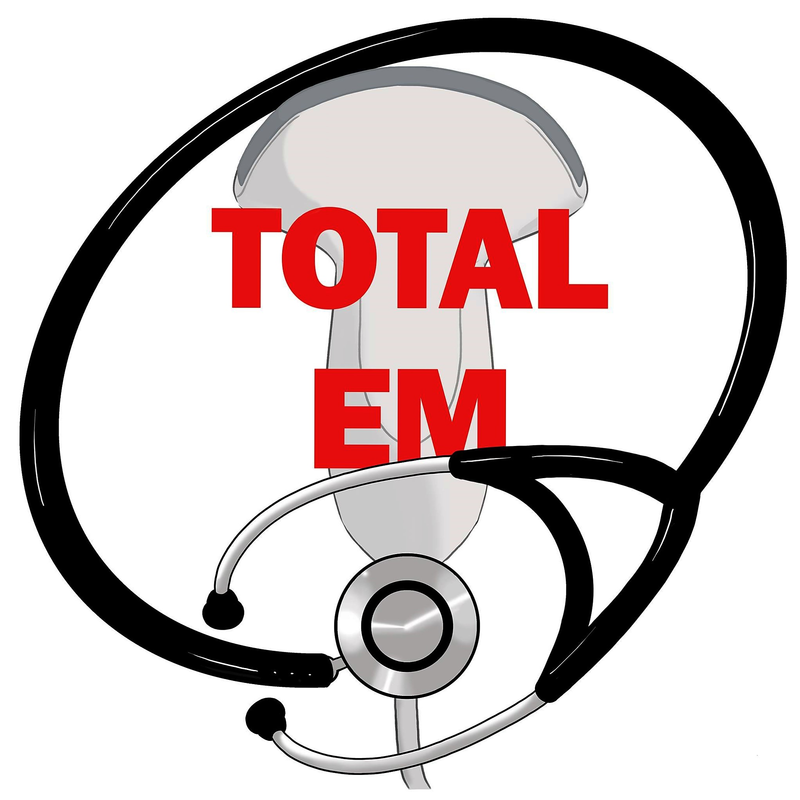|
Dental pain is a common complaint in emergency medicine. Often, it is seen as a non-emergent complaint and there is truth to that issue. However, dental pain can be life threatening and has some key points we will discuss in this podcast. The first step is to remember 3-2-1.
Although we will not strictly go in that order, 3-2-1 will help you remember the three main lessons of today. First, there are three key dental blocks. Second, there are two essential categories of dental pain: infection or fracture (sometimes also dislocation). Finally, one means that the patient with any concern for infection gets at least an antibiotic.
Let us hit the most important part first. There are two main categories of patients: those suspected of infection and those with a fracture or dislocation. Our primary concern are for emergencies. When it comes to infection this includes deep space infections such as Ludwig's angina and then abscesses including peritonsilar or retropharyngeal. Keep in mind these can be airway emergencies and we are looking for classic presentations such as changes of voice, trismus, and inability to handle secretions. Some dental trauma is emergent or at least urgent such as fracture with exposed pulp, avulsion, and luxation. Most of these will be referred to a dentist or oral surgeon on an outpatient basis in the next 24 hours. Mandible fractures and TMJ dislocation are more pertinent. There are some great reviews on the subject including Life in the Fast Lane, Hippo Education, Core EM, andFOAMcast. Also keep in mind that patient's could be drug seeking. However, we should not default to this and treat the symptoms accordingly. This includes antibiotics, dental blocks, and non-opiate medications. NSAIDs and topical anesthetics can be very effective for the patient to use at home. There are three main dental blocks to perform: inferior alveolar, infraorbital, and greater palatine. They will cover almost every part of the mouth and makes it simpler to keep track of how to perform. The easiest way to remember dosing is 3-2-1, respectively. Usually, we use bupivacaine 0.5% given its longer duration than lidocaine. The 3-2-1 is in reference to the amount of bupivacaine used in these areas and milliliters. It is worth noting that with the greater palatine nerve block (or any other for that matter) you may use less but try to avoid more unless additional coverage is needed. Medscape has some great information on how to perform these blocks. As mentioned, with dental infections there should be antibiotics given. Even if you are not fully sure about infection but it is suspected (and not concerned for other emergent pathology such as myocardial infarction), treat these with antibiotics since it is very likely to be the cause. In your less severe patients amoxicillin can be the most beneficial but penicillin VK is still frequently taught. Otherwise, for patients with higher risk, have recently been on amoxicillin, or are allergic the most benefit may be from clindamycin. If it is an allergy issue with amoxicillin or penicillin alone, cephalexin may be another option. Most people with infections do not actually have an abscess, but more of a cellulitis. However, if there is worsening condition with red flags such as the ones mentioned above there may be a need for surgical management including incision and drainage. Keep in mind antibiotics are often beneficial without obvious infection as it will help decrease the time until the dentist or oral surgeon will treat the patient and when treated can improve the effectiveness of local anesthesia. In summary, there are three blocks to perform, two types of dental patients, and at least one antibiotic should be used if infection is at all suspected. Learn how to perform the three types of dental blocks. You can learn more, but it is often not needed. Understand and recognize that the two main complaints are infection or fracture/dislocation. Finally, make sure to give at least an antibiotic. Let us know what you think by giving us feedback here in the comments section or contacting us on Twitter or Facebook. Remember to look us up on Libsyn and on iTunes. If you have any questions you can also comment below, email at [email protected], or send a message from the page. We hope to talk to everyone again soon. Until then, continue to provide total care everywhere.
0 Comments
Leave a Reply. |
Libsyn and iTunesWe are now on Libsyn and iTunes for your listening pleasure! Archives
August 2022
Categories |
||||||


 RSS Feed
RSS Feed